Peter Rollins's Blog, page 9
March 7, 2016
My Husband Thinks he’s a Chicken: Learning to Enjoy our Symptom

This morning a friend relayed to me a little story about a woman who was complaining to her friend that her husband thought he was a chicken.
“A chicken,” exclaimed her companion in surprise, “You need to send him to a psychoanalyst straight away!”
“I know, I know,” replied the first woman, “But the thing is, we really need the eggs.”
I liked this joke because it reminded me that our symptoms don’t need to cause us, or the people around us, suffering. For example, keeping ones house extremely tidy might be the way a person manages their anxiety, but this isn’t in itself a problem unless it causes a suffering equal to, or greater than, that which it tries to keep at bay. There is an important difference between the person who likes to keep a tidy home and the person who can’t leave the house unless the place is tidy. In the latter, the ritual begins to impinge on the individual’s life and ultimately becomes a milestone round their neck.
Not only are some symptoms harmless, some can actually be harnessed for great good. In learning to enjoy our symptoms we can find ways of harnessing them in ways that enrich our lives. This process of Sublimation involves taking a repressed pain and channelling it into the production of something beautiful. Perhaps deepening our personal lives, or inspiring us to do something positive in society.
This idea can help us understand why Lacan talks about a symptom becoming a sinthome.
Sinthome is pronounced like Saint Homme, which means “Holy Man.” Here Lacan is implying that the site of our suffering can become a type of saint, speaking words of healing into our lives.
When speaking of healthy individuals, communities or societies we should be careful not to fall into the trap of thinking this involves getting rid of all the symptoms found there. The real challenge lies in finding a way to turn them into a source for good.
March 5, 2016
Theology as Atheism: Feuerbach on the Abstract God
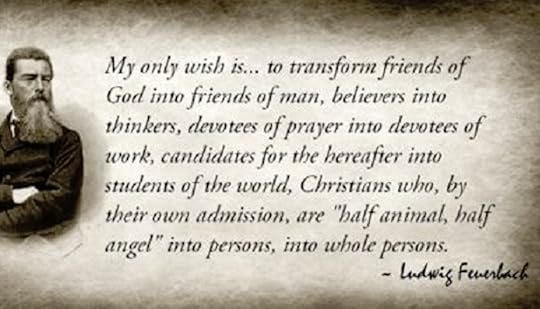
As part of the Atheism for Lent course we read some Ludwig Feuerbach. Feuerbach is a fascinating figure and someone I’ve found to be a deeply rewarding thinker. Standing as a key figure in the critique of religion as it developed in 19th century Europe, his influence echoes through the works of individuals like Marx, Freud and Nietzsche and beyond.
Aside from his more famous arguments, Feuerbach made the interesting claim that what was being done in the theological institutes of his day was nothing but a form of atheism. The reason for this claim lay in his observation that the theologians attempt to protect God from the anthropological critique (the notion that our ideas of God really reflects the inner life of the one who posits the ideas), ended up with nothing but an empty, abstract God; a God that differed in no substantial way from the claim that there is no God at all. This is an idea that is clearly stated in Anthony Flew’s famous argument concerning God’s death by a thousand qualifications.
Such a move is motivated by what the philosopher Slavoj Žižek would call the desire to have “coffee without the caffeine.” In other words, wanting the thing without the element that gives that thing its kick.
In relation to this Feuerbach writes,
To the truly religious man, God is not being without qualities… the denial of determinate, positive predicates… is nothing else than a denial of religion, with, however, an appearance of religion in its favour, so that it is not recognized as a denial; it is simply a subtle, disguised atheism.
The theological God was, for Feuerbach, an abstract God because it was a God abstracted from all the concrete things religious people claim about God: love, justice, anger, jealousy, mercy etc. etc.
Feuerbach was himself an atheist, but an atheist of a very particular sort. He rejected the type of atheism-in-practice that he saw in the theological schools, but he also had no time for the atheism that fought against this abstract theological God. For him, both sides were busy arguing about an impotent, ethereal notion that few outside the debating room cared about. Such a God, as Heidegger later wrote, is not one that inspires people to fall on their knees, play music to or dance before.
Both sides had effectively left out the biblical caffeine in their strange obsession over a decaffeinated scholastic coffee.
This is one of the reasons why Feuerbach remains an important figure in my own intellectual formation. For Pyrotheology is an approach that sets aside talk about the abstract God which animates so many youtube debates between theists and atheists. Instead attempting to unearth the truly scandalous and existential message of faith. A message that is grounded in the call to both embrace and transform the material world.
March 4, 2016
He may Look Like an Idiot, but Don’t Let That Fool You. He Really Is an Idiot
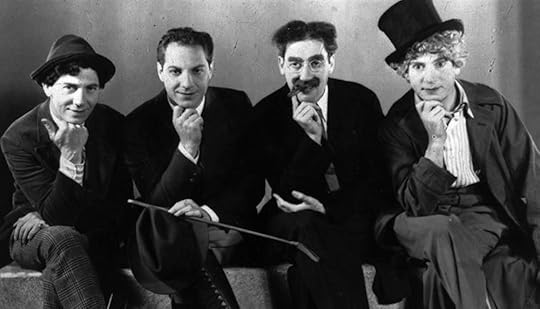
In the 2007 sci-fi movie Next, directed by Lee Tamahori, a small time Las Vegas magician, Cris Johnson (Nicolas Cage), is able to see into his future. At the beginning of the movie, we see Johnson use his abilities in a small Las Vegas nightclub. Afterwards he informs us, via a voiceover, that the truly surprising thing about some magicians who predict the future is that they really do. In other words, they hide their ability in plain sight.
This expresses the logic that Freud explores in Jokes and Their Relation to the Unconscious when he recalls the following story,
Two Jews meet in a railway carriage at a station in Galicia. ‘Where are you going?’ asks one. ‘To Cracow’ was the answer. ‘What a liar you are!’ broke out the other. ‘If you say you are going to Cracow, you want me to believe you are going to Lemberg. But I know you are going to Cracow. So why are you lying to me?’
This joke exposes how truth telling can conceal the truth. How we can tell someone a truth in such a way that people will assume it’s a lie.
An example of how the truth is able to be camouflaged in the truth can be seen in this excerpt from a 1922 article about Adolf Hitler in the New York Times,
Several reliable, well-informed sources confirmed the idea that Hitler’s anti-Semitism was not so genuine or violent as it sounded, and that he was merely using anti-Semitic propaganda as a bait to catch masses of followers and keep them aroused, enthusiastic, and in line for the time when his organization is perfected and sufficiently powerful to be employed effectively for political purposes.
While it’s very likely that right wing politicians who express openly racist, sexist, or anti-semitic views are hypocrites, opportunists, and manipulators who don’t really believe what they’re saying, the point is that we should avoid falling for the trap of seeking their real intentions and instead locate the horrifying truth of their message in what they actually present.
When looking at the current Republican frontrunner it’s worth paying heed to the philosopher Slavoj Žižek, who reminds us of the Marx brothers famous saying, “He may look like an idiot and talk like an idiot but don’t let that fool you. He really is an idiot.”
He May He may Look Like an Idiot, but Don’t Let That Fool You. He Really Is an Idiot

In the 2007 sci-fi movie Next, directed by Lee Tamahori, a small time Las Vegas magician, Cris Johnson (Nicolas Cage), is able to see into his future. At the beginning of the movie, we see Johnson use his abilities in a small Las Vegas nightclub. Afterwards he informs us, via a voiceover, that the truly surprising thing about some magicians who predict the future is that they really do. In other words, they hide their ability in plain sight.
Here we see a version of the logic that Freud explores in Jokes and Their Relation to the Unconscious when he recalls the following story,
Two Jews meet in a railway carriage at a station in Galicia. ‘Where are you going?’ asks one. ‘To Cracow’ was the answer. ‘What a liar you are!’ broke out the other. ‘If you say you are going to Cracow, you want me to believe you are going to Lemberg. But I know you are going to Cracow. So why are you lying to me?’
This joke exposes how truth telling can conceal the truth. How we can tell someone a truth in such a way that people will think it is a lie.
An example of how the truth can camouflage itself in the truth can be seen in a 1922 article about Adolf Hitler in the New York Times,
Several reliable, well-informed sources confirmed the idea that Hitler’s anti-Semitism was not so genuine or violent as it sounded, and that he was merely using anti-Semitic propaganda as a bait to catch masses of followers and keep them aroused, enthusiastic, and in line for the time when his organization is perfected and sufficiently powerful to be employed effectively for political purposes.
While it’s very likely that right wing politicians who express openly racist, sexist, or anti-semitic views are hypocrites, opportunists, and manipulators who don’t really believe what they’re saying, the point is that we should avoid falling for the trap of seeking their real intentions and locate the horrifying truth of their message in what they actually present.
When looking at the current Republican frontrunner it’s worth paying heed to the philosopher Slavoj Žižek, who reminds us of the Marx brothers famous saying, “He may look like an idiot and talk like an idiot but don’t let that fool you. He really is an idiot.”
Four Free Matches to Start a Fire

On 21st-22nd March I’m running a two-day intensive seminar in The Hatchery at Redondo Beach. We’ll explore the mechanisms of social change, how to promote healthy community, and the art of public speaking.
There will also be some special guests contributing to the content, including Barry Taylor and Bob Dalton.
To help make this accessible to more people, The Hatchery have kindly agreed to sponsor 4 tickets for people who’d like to be there, but can’t afford it. All you need to do is email me here, and give me a brief outline of why you’d like to attend.
You’ll still need to find a place to crash, but the content will cost you nothing and you’ll be hanging out right by the beach!
Know the Truth or Repeat the Trauma
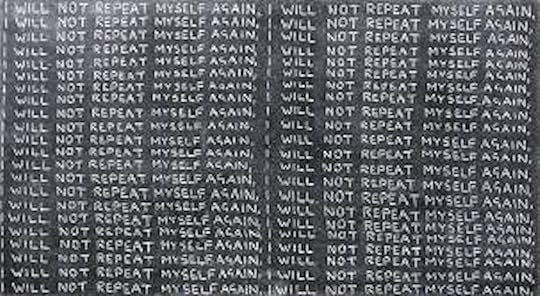
One of the popular ideas in the Higher Conscious movement revolves around the now. The past is past, the future is yet to come, the only reality is this moment, so embrace it.
This idea stands in sharp contrast to the psychoanalytic insight that the past isn’t history; that we carry our past with us wherever.
On one level this simply means that our past experiences mould our present ways of interacting with the world. That our current actions are a type of encyclopedic record of our past. So, if we want to know something about our past experiences, we can look at our present (our current relationships, fears, and desires) and indirectly discern what we can’t directly recall.
Yet there is another dimension to this saying that the past isn’t history. One that is more disturbing than the insight that echoes of our past ruminate in our present. It is the reality that many of us substantially repeat our past traumas again and again.
Whether it be in dreams, relationships or everyday circumstances, we can find ourselves condemned to re-enacting a painful past. We might, for instance, seek out partners who are distant from us, dislike us, or cause us damage. Indeed, if our partner doesn’t manifest these traits, we can find ourselves losing interest in them, or acting in ways that provoke them to play the sinister part. In psychoanalytic theory such acts are manifest early relational experiences that we are likely oblivious to. Experiences that have been long forgotten in the register of the conscious, but that are etched into the vinyl of our unconscious.
This phenomenon – called Repetition Compulsion – describes the way in which our past invades our present in an overwhelming way, causing us to rewrite the drafts of our life again and again with only slight changes in the characters and context.
If we are burdened by this ailment we come to resemble players in a theatrical performance that plays night after night. A drama that involves occasional changes in the actors and set design.
Part of the psychoanalytic process involves replaying these early traumatic experiences in the theatre of the clinic. Replaying them in such a way that they become visible to us, and where a different outcome can occur. The analyst becomes a stand-in for some long lost other from our past – via transference – but they don’t conspire with us to make the situation play out like before. Instead they help introduce difference into the repetition, a difference that helps the patient find freedom from the eternal recurrence of the same.
It has often been noted that Repetition Compulsion operates in society. The famous saying, “Those who do not learn history are doomed to repeat it,” captures this well.
The more we attempt to avoid a confrontation with the dark elements of our past (individually and communally), the more enslaved we become to them. If we are not able to bring the truth of our inmost being into the light of day we remain bound to our traumas. Prisoners of our past. Condemned to share the same type of curse that befell Sisyphus.
In contrast, if we can bear to know the truth, then the truth shall set us free.
By confronting the truth we find freedom from our enslavement to compulsive repetition. We’ll still repeat the past because the past remains a part of us, but the repetition will allow space for difference, novelty, and the incoming of the unforeseen. More than this, it will free us from the worst parts of our past.
Just as evolution itself is a form of repetition in difference – a species produces the same species, but with slight alterations that become evident over time – so the society of tomorrow, that we build today, will have elements from yesterday. But, if we can face the darkest parts of our history and learn from them, we will find ourselves better equipped to retain the best from the past, abandon the worst, and build a better future.
March 1, 2016
Building on Fire with Sackcloth and Ashes
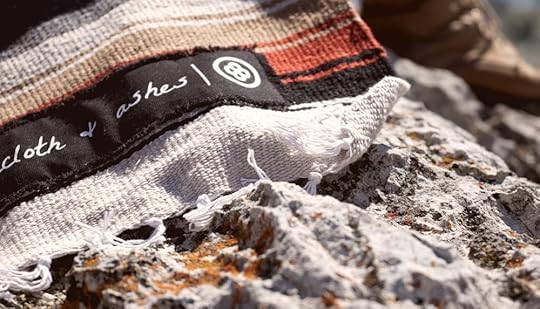
Over two days in March I’ll be working with a small group of people exploring how to instigating social change, build healthy community, and develop the art of public speaking (how to present challenging ideas in engaging and impactful ways).
I’m excited to announce that one of my special guests at the event will be Bob Dalton. Bob is the founder of Sackcloth & Ashes, a socially engaged company that creates beautiful blankets while raising awareness of homelessness. Indeed, for every item they sell, they directly donate a blanket to someone who is homeless. Bob was inspired to set up the company when his mother, a hardworking single mother, found herself living on the streets in 2013.
Inspired by the success of S&A Bob is now launching an exciting new organization called True Society dedicated to supporting people engaged in grass roots, front line social justice.
I’ve invited Bob because he combines a passionate heart with a strategic mind and an unparalleled drive to turn ideas into reality. I don’t know anyone better to help us as we look at how to put Radical Theology into practice in a way that creates positive change in individual lives, community and society at large.
This will be an important event for anyone interested in learning more about Religionless Christianity, as well as developing the skills needed to communicate it and practice it.
February 29, 2016
The Art of Self-Critique: On Randomness, Rationalization, and Belief Formation
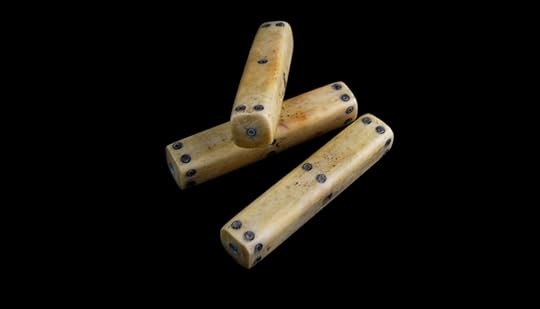
Many years ago we, at ikon, developed a transformance art experience that built randomness into its very structure. Everything that happened was decided on the night by casting lots, rolling dice, and flicking coins. Whether it was the talk, the song choices, or the ritual, everything involved a contingent element. I even told a improvised parable was partially formed on the spot using ideas people shouted out.
This event led me to write a parable – one that I’ve actually never published or even used – about a great philosopher who determined everything he believed by rolling three old bone dice. All his beliefs were constructed arbitrarily in this manner; from his ideas on morality, to his views on the meaning of life. Once a position was settled, he would go on to write learned texts defending his views, teach masterfully on the logic of his positions and engage in fiery debates with opponents.
Part of the inspiration for this transformance art event and the subsequent parable came from the desire to make visible the way most, if not all, our beliefs are formed. While we may convince ourselves that our religious, political and cultural ideas are ones we have rationally deliberated over and carefully decided, the reality is that, by the time we come to think about what we believe, we are already colonised by a whole army of beliefs.
It is not so much that we speak what we believe, but that we are mouthpieces for the propagation of certain beliefs. We feel that we are in the driving seat, when we are really the delivery mechanism of certain ideas.
The temptation we all face is that of uncritically siding with the colonizing force. Taking a purely apologetic stance in relation to the beliefs within us. Identifying wholly with them and defending them to the death.
To appreciate the role that contingency and context plays in the formation of our beliefs does not mean that we will always abandon them, or treat them with contempt. Indeed such a realization might help us to appreciate them all the more in their complexity and historicity. It will help us cultivate a healthy level of suspicion about what we think, and encourage an openness to interrogating them.
One of the ways to do this involves listening carefully and sensitively to other perspectives, allowing other positions to speak into the ones we hold. There are the differing voices that exist without our communities, those that originate outside them and those that come to us through the mists of time, via our encounter with past worlds.
This might be an interesting idea for some of us, but the question concerns how we might live into it. What type of practices might open us up to the voice of the other in such a way that we might be transformed? It is with this in mind that I developed the practices of The Last Supper, Atheism for Lent, The Evangelism Project and The Omega Course. I’d love to see more communities experiment with these practices, or ones that attempt the same thing.
This is something I’ll be exploring in more depth in my two day LA event Building on Fire in March. In addition to this, the two-day event will also explore how to instigate social change, build healthy community and develop the art of public speaking. Hope some of you can make it along.
If you’d like to join the Atheism for Lent experiment, there is still time. We’re about to spend the next three weeks exploring theological forms of atheism. Sign up here (so far over 600 individuals signed up and a dozen churches).
Learning the Art of Self-Critique: On Randomness, Rationalization, and Belief Formation

Many years ago we, at ikon, developed a transformance art experience that built randomness into its very structure. Everything that happened was decided on the night by casting lots, rolling dice, and flicking coins. Whether it was the talk, the song choices, or the ritual, everything involved a contingent element. I even told a improvised parable was partially formed on the spot using ideas people shouted out.
This event led me to write a parable – one that I’ve actually never published or even used – about a great philosopher who determined everything he believed by rolling three old bone dice. All his beliefs were constructed arbitrarily in this manner; from his ideas on morality, to his views on the meaning of life. Once a position was settled, he would go on to write learned texts defending his views, teach masterfully on the logic of his positions and engage in fiery debates with opponents.
Part of the inspiration for this transformance art event and the subsequent parable came from the desire to make visible the way most, if not all, our beliefs are formed. While we may convince ourselves that our religious, political and cultural ideas are ones we have rationally deliberated over and carefully decided, the reality is that, by the time we come to think about what we believe, we are already colonised by a whole army of beliefs.
It is not so much that we speak what we believe, but that we are mouthpieces for the propagation of certain beliefs. We feel that we are in the driving seat, when we are really the delivery mechanism of certain ideas.
The temptation we all face is that of uncritically siding with the colonizing force. Taking a purely apologetic stance in relation to the beliefs within us. Identifying wholly with them and defending them to the death.
To appreciate the role that contingency and context plays in the formation of our beliefs does not mean that we will always abandon them, or treat them with contempt. Indeed such a realization might help us to appreciate them all the more in their complexity and historicity. It will help us cultivate a healthy level of suspicion about what we think, and encourage an openness to interrogating them.
One of the ways to do this involves listening carefully and sensitively to other perspectives, allowing other positions to speak into the ones we hold. There are the differing voices that exist without our communities, those that originate outside them and those that come to us through the mists of time, via our encounter with past worlds.
This might be an interesting idea for some of us, but the question concerns how we might live into it. What type of practices might open us up to the voice of the other in such a way that we might be transformed? It is with this in mind that I developed the practices of The Last Supper, Atheism for Lent, The Evangelism Project and The Omega Course. I’d love to see more communities experiment with these practices, or ones that attempt the same thing.
This is something I’ll be exploring in more depth in my two day LA event Building on Fire in March. In addition to this, the two-day event will also explore how to instigate social change, build healthy community and develop the art of public speaking. Hope some of you can make it along.
If you’d like to join the Atheism for Lent experiment, there is still time. We’re about to spend the next three weeks exploring theological forms of atheism. Sign up here (so far over 600 individuals signed up and a dozen churches).
February 27, 2016
Katakomb, Sweden
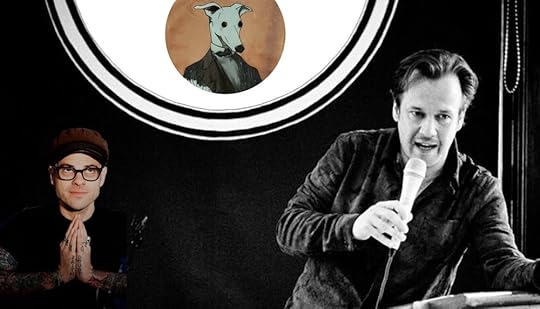
Ett Freestyle Christianity Event med Peter Rollins och Jay Bakker i samarbete med Betlehemskyrkan, Saronkyrkan, Carl Johans församling, Matteuskyrkan, Oscar Fredriks församling, samt Studieförbundet Bilda där biljetter finns att köpa: http://www.bilda.nu/sv/Amne/Cirkelinformation/?circle=772781
Katakomb är ett event över två dagar som kommer att handla om kristen tro i vår samtid. Tillsammans med teologen Peter Rollins och pastorn Jay Bakker kommer vi bland annat att fråga vad som händer med våra övertygelser om vi finner modet att ifrågasätta de grundpelare som de vilar på.
Vår målsättning är att introducera spännande tankar om de utmaningar som vetenskapen, filosofin och våra förbättrade möjligheter till kommunikation ställt vår förståelse av livet och tron inför. Vi önskar också att de som väljer att delta under dessa två dagar ska känna sig välkomna att påverka vårt gemensamma samtal med både frågor och egna tankar. Vårt upplägg inkluderar följaktligen en tanke om att eventet blir vad vi tillsammans gör det till.
Fredag 22 april i Saronkyrkan
17.00 – 19.00
Peter Rollins inleder Katakomb genom att placera oss i den radikalteologiska traditionen, vilket bland annat innebär att vi kommer att få stifta bekantskap med tänkare som Nietzsche, Marx och Freud. Peter kommer att tala i ungefär en timma och efter en kort paus bjuder vi in till ett panelsamtal i vilket även Jay Bakker, Josef Gustafsson och Joel Kuhlin kommer att medverka.
19.00 – 20.00
Paus för mat och det står pizza på menyn. En slice ingår i priset för kvällen.
20.00 – 22.00
Vi deltar i Saronkyrkans ordinarie fredagsgudstjänst Smaka & Se. Talare är Peter Rollins.
Lördag 23 april i Betlehemskyrkan och Oscar Fredriks kyrka
15.00 – 16.00
Vi möts upp i Betlehemskyrkans kapell för att delta i ett slags gemensam rit ledd av Peter Rollins. Eftersom antalet sittplatser i denna katakombliknande mötesplats är begränsat kan endast de 40 första som köper biljett till hela helgen erbjudas att delta.
16.00 – 18.00
Seminarium och panelsamtal med Freestyle Christianity, Peter Rollins, Jay Bakker
18.00 – 19.00
Vi bryter för att äta middag på stan. (Denna måltid ingår ej i priset)
19.00 – 21.30
Jay Bakker predikar om nåd.
21.30 – 22.00
Gemensam vandring till Oscar Fredriks kyrka där vi kommer att ha en avslutande andakt.
Söndag 24 april i Matteuskyrkan
11.00
Gudstjänst med Daniel Korol och Josef Gustafsson. (Fri entré)
Presentation av helgens talare
Peter Rollins är en irländsk författare, filosof och teolog som i dag bor i Los Angeles. Han reser världen runt och föreläser kring det han beskriver som ”Pyrotheology”, en hållning som ser tron som ett sätt att engagera sig i och för världen snarare än ett antal trossatser. Peter Rollins har inspireras av teologen/filosofen Jack Caputo, men även av tänkare som filosofen Slavoy Zizek och psykoanalytikern Jacques Lacan. Pete introducerades i USA av pastorn Rob Bell och har sedan dess ökat i popularitet. Likt hemma i Belfast har Rollins i New York byggt upp en gemenskap, Ikon, som kretsar kring att våga omfamna sitt tvivel och sin brustenhet. Pete har skrivit sex egna böcker och medverkat i ytterligare några.
Jay Bakker är en pastor, författare och teolog som har arbetat med att grunda nya församlingar med gudstjänster på pubar och nöjesställen. Hans livsberättelse innefattar en svår uppväxt som ”barn-tv kändis”. Jay är nämligen son till tv-evangelistparet Jim Bakker och Tammy Bakker som var i rampljuset under 1970- och 80-talet i USA. Han fick en svår uppväxt som kulminerade när hans far hamnade i fängelse för förskingring. Något som han har bearbetat i boken Son of a Preacher Man och som har uppmärksammats i Time Magazine. Bakkers teologi som börjar och slutar i nåden uttrycks tydligt i hans senaste bok Fall to grace.
Kostnad
Priset för att delta under helgen är 100 kronor per dag, och som nämns ovan kommer de första 40 personerna som köper biljett för hela helgen att erbjudas plats i den rit vi under Peter Rollins ledning kommer genomföra i Betlehemskyrkans kapell. För att köpa biljett, besök Bildas hemsida: http://www.bilda.nu/sv/Amne/Cirkelinformation/?circle=772781
Peter Rollins's Blog
- Peter Rollins's profile
- 314 followers



